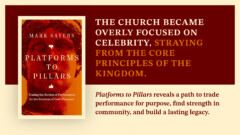I continue to make my way, rather slowly, really, through the 20th anniversary edition of Neil Postman’s Amusing Ourselves to Death. Though written some 22 years ago, it continues to stretch my mind and to help me think about this visual culture we live in. In a chapter dealing with “the peek-a-boo world” he discusses the changing concept and definition of news. Where news was once regarded as functional information, the telegraph (and, after it, other forms of far-reaching and instant communication) made relevance irrelevant. Suddenly people encountered news that had very little or nothing to do with those to whom it was addressed. Information became a form of entertainment and with it news became entertainment. Postman writes this about “context-free information:”
How often does it occur that information provided you on morning radio or television, or in the morning newspaper, causes you to alter your plans for the day, or to take some action you would not otherwise have taken, or provides some action you would not otherwise have taken, or provides insight into some problem you are required to solve? … Most of our daily news is inert, consisting of information that gives us something to talk about but cannot lead to any meaningful action. This fact is the principle legacy of the telegraph: By generating an abundance of irrelevant information, it dramatically altered what may be called the “information-action ratio.”
What is the problem with this? Postman answers, “In both oral and typographic cultures, information derives its importance from the possibilities of action.” Telegraphy, television and other forms of electronic media have made the relationship between information and action both abstract and remote. We hear more news than ever which elicits more opinions than ever, but which leave us increasingly impotent, unable to do anything more than offer opinions and bluster about what we might do if we could. And I am left asking, do I really need to read and to know so much of what passes as news today?









